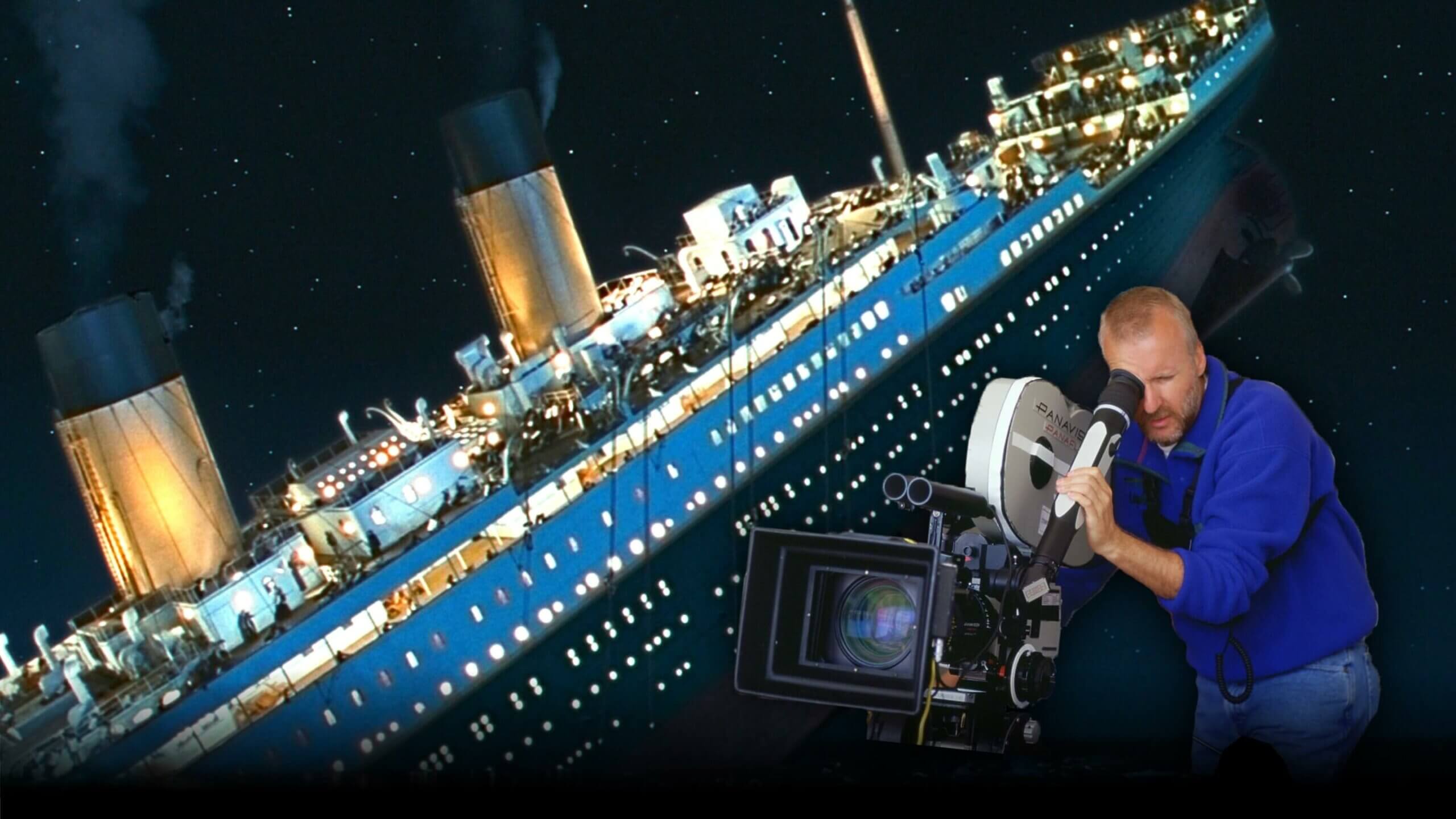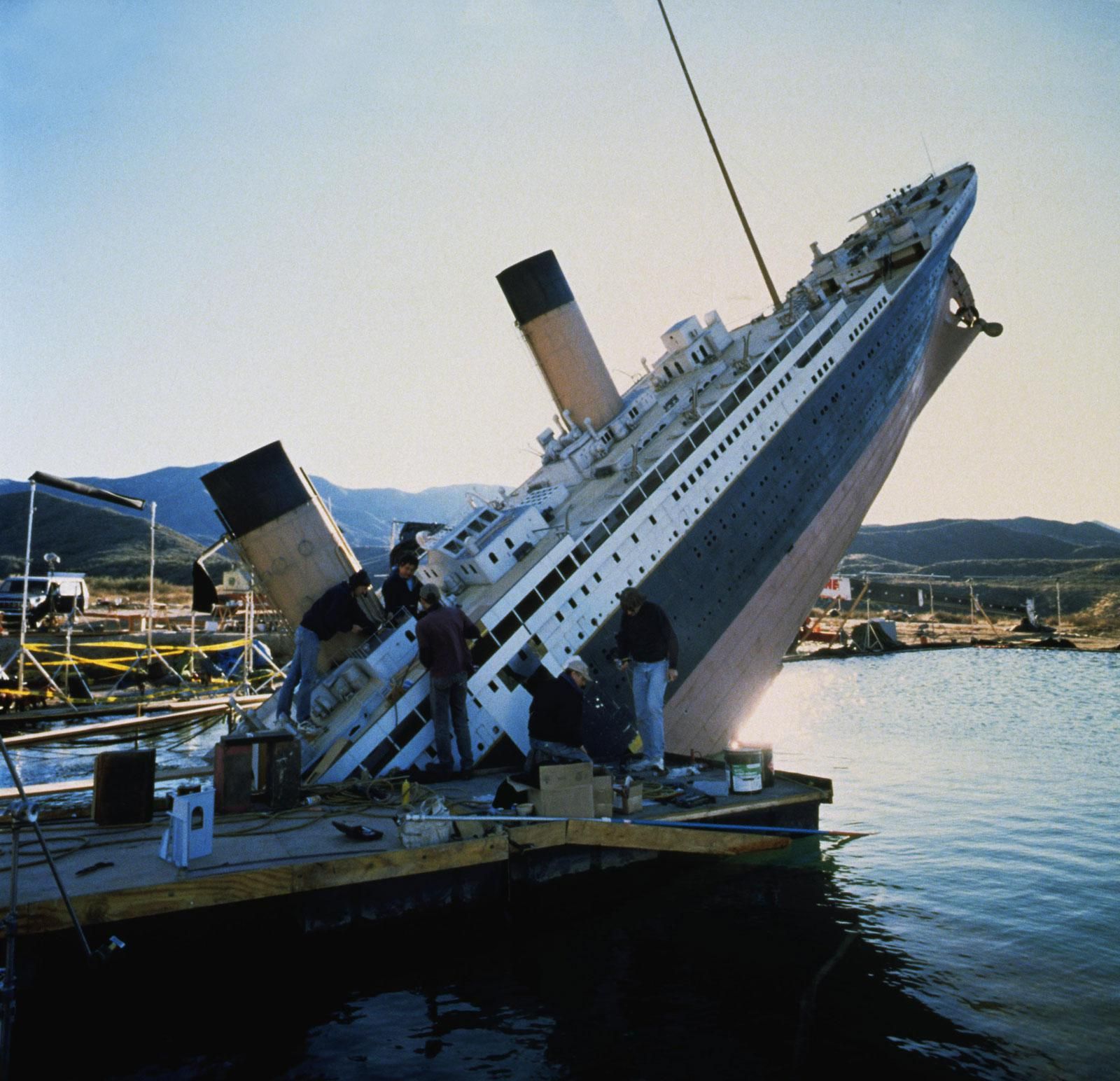How Was Titanic Filmed: A Deep Dive Into The Making Of A Masterpiece
Let's talk about Titanic, the movie that made everyone cry (and maybe still does). If you've ever wondered how this epic film was brought to life, you're in the right place. From massive sets to groundbreaking CGI, the making of Titanic was no ordinary production. This is the story of how James Cameron and his team created one of the most iconic films in cinematic history.
Titanic isn't just a love story; it's a visual masterpiece that changed the game for Hollywood. When the film premiered in 1997, it blew audiences away with its stunning visuals and emotional depth. But have you ever stopped to think about the magic behind the scenes? How did they recreate the massive shipwreck and the tragic events of that fateful night?
This article will take you through every step of the Titanic filming process, from the pre-production planning to the final touches in post-production. Buckle up because we're diving deep into the world of cinema history!
- January Zodiac Signs A Deep Dive Into Capricorn And Aquarius Energy
- Unveiling The Genius Criminal Minds Spencer Reid Actor
Table of Contents
- Introduction
- Pre-Production: Laying the Foundation
- Building the Sets: Creating the Titanic
- Casting the Stars: Who Played Who?
- Filming Locations: Where Did They Shoot?
- Technology and CGI: How Did They Do It?
- Challenges Faced During Filming
- Recreating the Sinking Scene
- Costumes and Props: Attention to Detail
- Music and Soundtrack: Adding Emotion
- The Legacy of Titanic
Pre-Production: Laying the Foundation
Before the cameras rolled, a ton of work went into planning Titanic. James Cameron, the director, had a clear vision for the film. He wanted to create an authentic experience that would transport viewers back to 1912. This meant meticulous research and preparation.
The pre-production phase involved gathering historical data, designing storyboards, and creating detailed blueprints of the ship. Cameron even visited the actual Titanic wreck to ensure accuracy. This level of dedication set the tone for the entire production.
Research and Storyboarding
Research was key to making Titanic feel real. The team studied photographs, blueprints, and survivor accounts to recreate the ship's design. Storyboarding helped visualize key scenes, like the iconic "I'm flying" moment and the tragic sinking sequence. Every detail mattered, from the ship's grand staircase to the third-class cabins.
- Alwyn The Untold Story Of Taylor Swifts Mysterious Boyfriend
- Miley Cyrus Maxx The Ultimate Guide To Her Life Career And Influence
Building the Sets: Creating the Titanic
Now, here's where things get interesting. To bring Titanic to life, the production team built a massive replica of the ship. This wasn't your average movie set; it was a 775-foot-long structure that took up two football fields! Located in Baja California, Mexico, the set was a marvel of engineering.
The set was designed to be partially submerged, allowing filmmakers to simulate the ship's sinking. This meant building parts of the ship on hydraulic lifts and using water tanks to create realistic flooding effects. It was a logistical nightmare, but totally worth it.
Hydraulics and Water Effects
Hydraulic systems were crucial for recreating the ship's movements. These systems allowed the set to tilt and sink, giving actors the sensation of being on a real ship. Water effects were achieved using massive tanks and pumps, ensuring the scenes felt authentic. It was all about making the audience believe they were there.
Casting the Stars: Who Played Who?
No movie is complete without its cast, and Titanic had some of the biggest names in Hollywood. Leonardo DiCaprio and Kate Winslet were cast as Jack and Rose, the film's star-crossed lovers. Their chemistry brought the romance to life, making audiences root for them even as tragedy loomed.
Other notable cast members included Billy Zane as the suave Cal Hockley and Kathy Bates as the feisty Molly Brown. Each actor brought their A-game, delivering performances that resonated with audiences worldwide.
The Chemistry Between Jack and Rose
Leo and Kate had an undeniable chemistry that made their characters unforgettable. Their on-screen romance was so believable because of the trust and connection they built off-screen. Fans still talk about their performances years later, proving the power of great casting.
Filming Locations: Where Did They Shoot?
Titanic was filmed in several locations, each chosen for its unique qualities. The main set was in Baja California, where the massive ship replica was constructed. Other scenes were shot in Mexico and on a soundstage in Los Angeles.
For exterior shots, the team used the actual ocean to capture the vastness of the sea. This added a layer of realism that couldn't be replicated in a studio. The combination of locations gave the film its epic scope.
Baja California: The Heart of Production
Baja California became the epicenter of Titanic's production. The set was built there because of its proximity to the ocean and the availability of space. The local community even got involved, providing labor and resources to support the massive project. It was a true collaboration between Hollywood and Mexico.
Technology and CGI: How Did They Do It?
Titanic was groundbreaking in its use of technology and CGI. In 1997, CGI was still a relatively new tool in filmmaking, but Cameron pushed its limits to create stunning visuals. From the ship's exterior to the underwater sequences, CGI played a crucial role in bringing Titanic to life.
The team used motion capture technology to simulate the ship's movements and create realistic water effects. This was a huge leap forward in visual effects, setting a new standard for future films.
CGI and Visual Effects
CGI was used to enhance certain scenes, like the ship breaking in half and sinking into the ocean. These effects were blended seamlessly with practical effects to create a cohesive visual experience. The result was a film that looked both realistic and breathtaking.
Challenges Faced During Filming
Filming Titanic wasn't without its challenges. The production faced numerous obstacles, from technical difficulties to weather-related delays. One of the biggest challenges was managing the massive set and coordinating the hundreds of crew members involved.
Cameron's perfectionism also added to the complexity. He insisted on getting every detail right, which sometimes meant reshooting scenes multiple times. Despite the challenges, the team persevered, driven by a shared passion for the project.
Weather and Technical Issues
Weather played a big role in the filming process. Storms and high winds often disrupted shooting schedules, forcing the team to adapt quickly. Technical issues with the hydraulic systems and water tanks also caused delays, but the crew found innovative solutions to keep things moving.
Recreating the Sinking Scene
The sinking scene is arguably the most iconic part of Titanic. Filming it required careful planning and coordination. The team used a combination of practical effects and CGI to recreate the ship's descent into the ocean.
Actors were suspended on wires to simulate being swept away by the water, while massive water tanks created the flooding effects. The result was a scene that left audiences breathless and emotionally devastated.
The Final Moments
The final moments of the sinking scene were particularly challenging to film. The team had to ensure the actors' safety while creating the illusion of chaos and destruction. Every detail was meticulously planned, from the lighting to the sound effects, to make the scene as realistic as possible.
Costumes and Props: Attention to Detail
Costumes and props played a vital role in bringing Titanic's world to life. The wardrobe department created over 200 costumes, each designed to reflect the characters' social status and personality. From Rose's elegant gowns to Jack's casual attire, every outfit was carefully chosen.
Props were equally important, with the team recreating everything from period furniture to dining utensils. This attention to detail helped immerse viewers in the film's historical setting.
Designing the Costumes
The costume design team worked tirelessly to ensure authenticity. They studied fashion from the early 1900s and collaborated with historians to get every detail right. The result was a collection of costumes that not only looked beautiful but also told a story about the characters who wore them.
Music and Soundtrack: Adding Emotion
No discussion of Titanic would be complete without mentioning its iconic soundtrack. Composer James Horner created a score that perfectly complemented the film's emotional journey. The theme song, "My Heart Will Go On," became a global hit, further cementing the film's legacy.
Sound design also played a crucial role, with the team creating realistic sound effects for everything from the ship's engines to the screams of passengers. These elements added depth and realism to the viewing experience.
The Power of Music
Music has the power to evoke emotions, and Titanic's soundtrack does just that. The score enhances key moments in the film, amplifying the drama and romance. Whether it's the sweeping orchestral pieces or the haunting melodies, the music stays with you long after the credits roll.
The Legacy of Titanic
Titanic's impact on cinema and pop culture cannot be overstated. It won 11 Academy Awards, including Best Picture and Best Director, and became the highest-grossing film of all time (until Avatar came along). But its legacy goes beyond box office numbers.
The film's themes of love, sacrifice, and survival continue to resonate with audiences worldwide. It's a reminder of the power of storytelling and the importance of preserving history through art.
Why Titanic Matters
Titanic matters because it tells a universal story that transcends time and culture. It reminds us of the fragility of life and the resilience of the human spirit. Whether you're a fan of romance, history, or epic blockbusters, Titanic has something to offer everyone.
In conclusion, the making of Titanic was a monumental achievement in filmmaking. From its groundbreaking use of technology to its unforgettable performances, the film set a new standard for cinematic excellence. So the next time you watch it, take a moment to appreciate the hard work and dedication that went into bringing this story to life.
Now it's your turn! Have you seen Titanic? What's your favorite scene or moment from the film? Let us know in the comments below, and don't forget to share this article with your friends. Together, let's keep the legacy of Titanic alive!



Detail Author:
- Name : Prof. Lula Hamill III
- Username : ritchie.jayne
- Email : dpaucek@hotmail.com
- Birthdate : 1995-08-24
- Address : 7657 Morissette Squares Suite 804 Kohlerland, IL 19556
- Phone : +1.614.760.3900
- Company : Crooks-Dicki
- Job : Animal Trainer
- Bio : Maxime sed aut enim officia ducimus qui aut. Dolores amet officia doloremque explicabo. Qui minima et tenetur velit quo facilis.
Socials
linkedin:
- url : https://linkedin.com/in/enola2603
- username : enola2603
- bio : Aliquam quo aut nisi quis.
- followers : 4618
- following : 2185
facebook:
- url : https://facebook.com/kleine
- username : kleine
- bio : Facilis velit vero delectus tempore ex excepturi cumque.
- followers : 6819
- following : 2021
instagram:
- url : https://instagram.com/kleine
- username : kleine
- bio : Nemo quo omnis voluptas a est atque. Neque rerum et est. Earum officiis facilis maiores omnis est.
- followers : 2374
- following : 2475